It is thought that the original bronze was part of a statuary group on the Pergamon acropolis commemorating the victory of Attalos in 230 BCE over the Gauls. Although it represents a defeated enemy, it still records his heroism and bravery. It is typically Hellenistic in that it depicts pain expressively (his bleeding wound is obvious at his side) and in that it attempts to evoke an emotional response from the viewer.
|
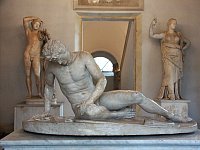
|
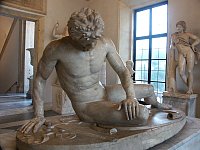
|
This Hellenistic sculpture records accurately this barbarian/Celtic type: long bushy hair, mustache, and neck ornament--the torque. The beautifully executed athletic physique seems to indicate a respect for this fallen enemy. |
| |
|
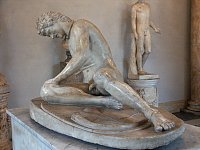
|
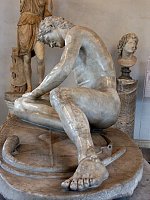
|
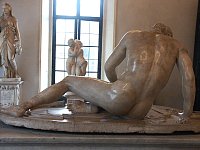
|
| |
|
| The trumpeter lies on his oval shield with his trumpet at his feet. His downcast head suggests he is near death. |
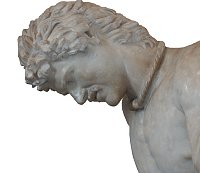
|
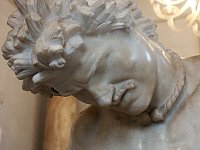
|
| |
|
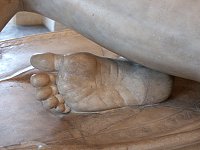
|
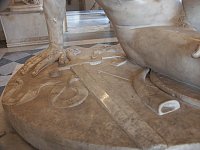
|


 Go to the Index of works in the Capitoline Museum in Rome.
Go to the Index of works in the Capitoline Museum in Rome. Click here to return to index of art historical sites.
Click here to return to index of art historical sites.
 Click here to return to index of artists and architects.
Click here to return to index of artists and architects.
 Click here to return to chronological index.
Click here to return to chronological index.
 Click here to see the home page of Bluffton University.
Click here to see the home page of Bluffton University.

